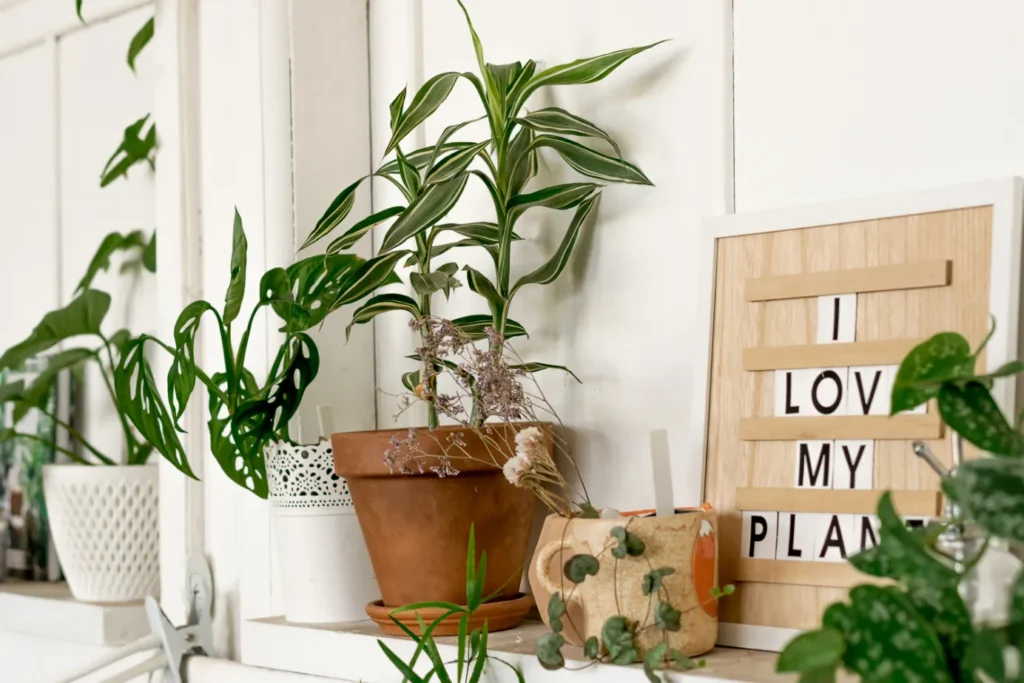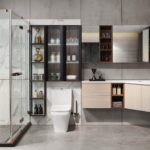Effective Healing Through Interior Architecture In Delhi-NCR: 6 Significant Findings
Overview
Explore the power of healing interior architecture in Delhi-NCR, a transformative journey of impactful design for wellness.
Amidst the relentless pulse of India’s urban life, Delhi-NCR stands as a thriving emblem of history, culture, and economic vigor. Yet, this sprawling metropolis grapples with a distinct dichotomy, facing formidable urban challenges that blur the serenity of its soul. The diverse tapestry of this region often finds itself eclipsed by the clamor of accelerated urban growth, pervasive pollution, and the welfare of its inhabitants.
To underscore the severity of the situation, consider this stark fact: Back in 2014, Delhi earned the dubious distinction of being labeled the planet’s most polluted city by the World Health Organization. It’s a stark reminder of the environmental burden this vibrant city bears. The relentless influx of people, the ceaseless flow of traffic, and the pervasive shroud of polluted air combine to form a triad of urban challenges that Delhi-NCR is striving to overcome.
Yet, amidst the chaos and clamor, there emerges a profound and transformative force—Emotional Architecture. It goes beyond the mere erection of structures; it involves the art of fashioning spaces that embrace the human spirit, soothe the mind, and uplift the soul. Emotional Architecture is the fusion of aesthetics and psychology, where every architectural element, every curve and color, holds the power to impact human emotions and mental health.
It’s about creating sanctuaries within the urban jungle, enriching the cityscape with spaces that resonate with the essence of human experience. In this vibrant urban ecosystem, one vital aspect of Emotional Architecture is the infusion of indoor greenery. Beyond its aesthetic allure, it serves as a lifeline to fresh air, tranquility, and psychological respite. With the city’s skies often veiled in a murky shroud of smog, indoor greenery becomes more than a design choice; it’s a lifeline to cleaner air and a sanctuary for the weary spirit.
In this blog, we embark on a journey to explore the transformative influence of Emotional Architecture and the pivotal role of indoor greenery in rejuvenating Delhi-NCR’s urban environment. Through captivating case studies and scientific insights, we will uncover how this city can reimagine its architecture to foster healing and well-being amidst its urban challenges. Together, we will navigate the path to a Delhi-NCR that rises above the smog and chaos, embracing Emotional Architecture and greenery to create a more harmonious and emotionally fulfilling urban experience.
Emotional Architecture In Delhi-NCR: Crafting Spaces That Heal

Defining Emotional Architecture
In the realm of urban development and interior architecture, “Emotional Architecture” is not just a catchphrase; it’s a transformative concept that resonates with the very essence of human experience. So, what exactly is it? At its core, Emotional Architecture represents the art of designing spaces that prioritize human emotions, well-being, and psychological harmony. It is the fusion of aesthetics and psychology, where every aspect of a structure, from its layout to its color scheme, is meticulously crafted to create an environment that engages the senses, nurtures the spirit, and stirs the soul.
Importance Of Emotional Interior Architecture In Urban Settings
In a bustling metropolis like Delhi-NCR, where life’s pace is relentless and the challenges of pollution and congestion are ever-present, the significance of Emotional Architecture cannot be overstated. Why? Because urban settings have the power to either enhance or hinder our well-being. Consider a city block where high-rise concrete structures dominate the skyline, with no consideration for the comfort and emotions of the people who dwell within.
Now, contrast this with a neighborhood that features innovative designs, vibrant green spaces, and tranquil pockets that allow individuals to find solace amid the urban chaos. The latter is a result of Emotional Architecture in action.
Emotional Architecture addresses the needs and desires of residents. It acknowledges that we aren’t just looking for shelter; we’re seeking environments that enhance our lives. In Delhi-NCR, this approach is invaluable in mitigating the stresses of city life and fostering a sense of belonging. It transforms concrete jungles into urban oases where residents can not only survive but thrive.
How Emotional Architecture Contributes To Healing

One of the most powerful aspects of Interior Architecture is its ability to contribute to healing. It goes beyond aesthetics; it touches our emotions and well-being in profound ways. Take, for example, a hospital. In the traditional sense, hospitals are often sterile, cold, and intimidating places. However, through Emotional Architecture, these spaces can be designed to soothe patients, ease the anxiety of visitors, and create a healing atmosphere.
Soft color palettes, natural lighting, and soothing artwork can make a significant difference in the healing process. Now, let’s bring it closer to home in Delhi-NCR. The bustling IGI Airport, a hub for millions of travelers, is a remarkable example of Emotional Architecture. Its design not only caters to functionality but also strives to evoke a sense of awe and comfort. The airy, open spaces, the aesthetic use of glass and metal, and the integration of greenery create an environment that eases the stress of travel, fosters a positive mood, and contributes to a memorable travel experience.
Similarly, in residential spaces, Emotional Architecture can be harnessed to create homes that are not just physical structures but sanctuaries that promote emotional well-being. Consider homes with well-placed windows that frame the natural beauty of Delhi’s Aravalli hills. These homes are designed to embrace the city’s natural surroundings, offering moments of serenity and connection to nature within the hustle and bustle of urban life.
In conclusion, Emotional Architecture in Delhi-NCR is the key to transforming the city’s urban landscape into spaces that resonate with human emotions and contribute to healing. Whether it’s the design of public buildings, hospitals, or residential spaces, Emotional Architecture has the power to shape environments that prioritize the emotional and psychological well-being of its residents. It’s more than just interior architecture; it’s the essence of what makes a city a true home.
Indoor Greenery In Delhi-NCR: A Breath Of Fresh Air

Pollution And Dust Levels In Delhi-NCR
The pollution predicament in Delhi-NCR is an open secret. Vehicular emissions, industrial activities, and the geographical challenge of being encircled by plains have contributed to a distressing state of affairs. Moreover, dust and particulate matter from construction sites and unpaved roads exacerbate the issue. For us, the residents of this region, breathing at times feels like an arduous task.
The Advantages Of Indoor Greenery In Combating Pollution
In this daunting environmental scenario, indoor greenery emerges as a silent savior. The concept of integrating thriving, living greenery into our homes and workplaces transcends being a mere design trend; it stands as a practical and effective antidote to pollution. Indoor plants proficiently absorb these harmful pollutants through their leaves and roots, gifting us with cleaner, healthier air.
To illustrate, let’s envision a location within Delhi-NCR, such as the vibrant Connaught Place. It’s a bustling hub teeming with pollution from traffic, construction, and the everyday urban bustle. However, when you step into a thoughtfully designed café or office in this area, you may encounter flourishing indoor greenery. These thoughtfully selected indoor plants not only enhance the visual allure of the space but also act as a protective shield against external pollutants. They ensure a cleaner, more breathable atmosphere, transforming these indoor areas into sanctuaries amidst the urban mayhem.
The Role Of Indoor Plants In Enhancing Indoor Air Quality

The importance of indoor plants in enhancing indoor air quality cannot be overstated. As an additional benefit, these green companions also release oxygen, infusing the indoor environment with a fresher and more invigorating ambiance. A striking illustration of this transformation can be found in the ‘Green Wall’ at Delhi’s Chhatarpur Metro Station.
Amidst the perpetual flux of commuters and exhaust fumes, this vertical garden stands as a resolute guardian. It not only introduces a touch of greenery to the bustling urban transit space but also serves as a natural air purifier. The densely packed plants don’t just contribute to a more pleasant commuting experience but also underscore the potential of incorporating indoor greenery in public spaces as a measure to combat pollution.
In essence, indoor greenery transcends being a mere interior design choice; it represents a strategic response to the environmental challenges faced by Delhi-NCR. From corporate offices situated in Gurgaon to residential apartments found in Noida, and even public spaces within Delhi, indoor plants are taking center stage in the mission to create indoor settings that not only promote better health but also a heightened sense of comfort. They serve as living testaments to the transformative influence of green design in interior architecture, offering a refreshing respite from the clutches of pollution.
Case Studies Of Emotional Architecture And Indoor Greenery In Delhi-NCR
Lotus Temple: A Haven Of Calm And Inclusivity

The Lotus Temple, an architectural gem in Delhi-NCR, is a true embodiment of Emotional Architecture. Resembling the graceful bloom of a lotus flower, the Bahá’í House of Worship extends a warm welcome to individuals from diverse backgrounds, embracing them without regard to their faith. The temple’s architecture itself is a tribute to the concept of inclusivity, with the lotus serving as a symbol of purity and renewal.
The meticulously groomed gardens encircling the temple contribute to a peaceful and hospitable environment. The blend of innovative architectural design and tranquil greenery makes the Lotus Temple a place of solace, where visitors can find both inner peace and connection to the natural world.
Akshardham Temple: Tradition Meets Tranquility

The Akshardham Temple stands as a testament to the rich cultural heritage of India. This stunning temple complex combines traditional Indian architectural elements with a peaceful garden that envelops the surroundings. The surrounding gardens are a serene oasis amid the urban chaos.
Water features, sculptures, and greenery create an environment that invites reflection and relaxation. Akshardham showcases how Emotional Architecture, rooted in cultural tradition and natural elements, can create spaces that transport visitors to a state of tranquility and introspection.
ITC Maurya: The Green Retreat In The Heart Of The City

Delhi-NCR’s ITC Maurya is not just a luxury hotel; it’s a prime example of how indoor greenery can transform an urban space. Step into the hotel, and you’re immediately greeted by a striking vertical garden, rising up multiple stories. The cascading foliage and lush green walls serve as a living backdrop to the contemporary interior.
The presence of indoor greenery goes beyond mere aesthetics; it’s a fundamental element of the design, actively enhancing the ambiance to create a refreshing and invigorating atmosphere. The use of plants within the hotel’s interior showcases how Emotional Architecture can create a harmonious blend of luxury and nature, even in the heart of a bustling city.
In these case studies, we witness the transformative power of Emotional Architecture and the integration of indoor greenery in Delhi-NCR. These remarkable examples emphasize the potential of design to shape environments that nurture the spirit, offer solace, and elevate the quality of life for residents and visitors alike. Each case demonstrates that Emotional Architecture, when blended with natural elements, has the ability to create spaces that transcend the ordinary, forging a deeper connection between people, architecture, and the environment.
Challenges And Opportunities

The application of Emotional Architecture and indoor greenery in Delhi-NCR is accompanied by a host of distinctive challenges that require careful consideration. The region grapples with staggering population density and alarming pollution levels. These factors, combined with limited space and urban congestion, make it an arduous task to carve out green sanctuaries and design emotionally enriching spaces.
The battle against pollution is an ongoing struggle. While indoor greenery can help purify indoor air, addressing the outdoor air quality remains a monumental challenge. Creating green spaces within the concrete jungle is also a challenge. Finding the real estate for parks and gardens amidst the crowded landscape of Delhi-NCR demands innovative urban planning and resource allocation.
Moreover, affordability and accessibility are key concerns. Not everyone in Delhi-NCR can afford homes or workspaces with extensive indoor greenery or emotionally designed architecture. Ensuring that the benefits of Emotional Architecture and indoor greenery reach all sections of society remains a challenge. Amidst these challenges, architects and urban planners in Delhi-NCR have an exciting opportunity to shape the region’s future.
The integration of Emotional Architecture and indoor greenery can be a game-changer. For example, consider the Metro Bhawan in Delhi. This sustainable, eco-friendly structure combines cutting-edge architectural design with indoor greenery. By replicating such models in other public buildings and metro stations, urban planners can significantly enhance the city’s urban experience.
Architects and planners can also encourage green building certifications, such as LEED (Leadership in Energy and Environmental Design), which promotes sustainable designs. These certifications can become a norm for upcoming constructions. The development of “urban forests” within the city, as seen in Gurugram’s Aravalli Biodiversity Park, provides a template for urban planners. By creating pockets of nature within the city, they can offer residents a reprieve from the urban chaos.
The government’s active involvement in incentivizing green architecture and Emotional Architecture, as well as providing infrastructure for urban green spaces, can pave the way for a healthier, more emotionally enriching Delhi-NCR. Architects and planners have the opportunity to pioneer innovative solutions, transforming Delhi-NCR into a greener, more emotionally engaging urban landscape, despite the challenges that lie ahead.
Psychological And Health Benefits Of Emotional Architecture

Amid Delhi-NCR’s bustling urban environment, Emotional Architecture and indoor greenery offer a sanctuary of psychological and health advantages for its residents. The carefully crafted designs of Emotional Architecture provide moments of tranquility and serenity, offering a respite from urban chaos. The use of soothing colors, natural light, and harmonious proportions can reduce stress and anxiety, promoting emotional well-being.
This emotional respite is crucial in a city where the daily grind often takes its toll on mental health. Indoor greenery plays a pivotal role in enhancing indoor air quality. It acts as a natural filter, removing harmful pollutants and releasing oxygen. Cleaner air contributes to better respiratory health and a sense of vitality. This is particularly important in Delhi-NCR, where pollution levels can be hazardous.
Additionally, Emotional Architecture and indoor greenery stimulate cognitive functions, enhancing focus and creativity. In workplaces and educational institutions, these elements can improve productivity and cognitive performance. Furthermore, Emotional Architecture fosters a sense of community and social well-being, as spaces designed for interaction and connection promote a sense of belonging, reducing feelings of isolation.
In a densely populated area like Delhi-NCR, this is vital for residents’ emotional health. In conclusion, Emotional Architecture and indoor greenery in Delhi-NCR are not just design concepts; they are profound contributors to the psychological and physical health of the city’s residents, offering a haven of emotional respite, cleaner air, improved cognitive functions, and enriched social well-being, fostering a healthier and more balanced urban life.
Conclusion
In the ever-evolving landscape of Delhi-NCR, the symbiotic relationship between Emotional Architecture and indoor greenery offers a promising blueprint for a healthier, more harmonious urban existence. As residents navigate the challenges posed by population density and pollution, these design elements stand as beacons of hope, enriching lives in manifold ways.
The psychological benefits are profound, with Emotional Architecture’s embrace of serenity and Emotional Architecture’s harmonious proportions offering solace amidst the urban frenzy. Improved air quality, thanks to indoor greenery, acts as a breath of fresh air for residents, countering the debilitating effects of pollution. The cognitive advantages, from enhanced concentration to increased creativity, are invaluable assets in the realm of productivity and innovation.
Emotional Architecture’s promotion of social well-being fosters connections and community bonds, essential in a city where isolation often lurks. In Delhi-NCR, the fusion of Emotional Architecture and indoor greenery transcends the realm of design; it is a testament to the potential of human-centric urban planning. The city’s architects and urban planners have an opportunity to shape an environment that nurtures emotional and physical well-being, offering its inhabitants a sanctuary within the city.
As we look forward, the quest for healthier, happier city living can find inspiration in the flourishing gardens and emotionally enriched spaces of Delhi-NCR. In embracing this approach, we pave the way for a future where Emotional Architecture and indoor greenery become synonymous with the heart of urban development, creating a healthier and more vibrant Delhi-NCR for all.
The White Frame is not just another interior design and build firm, we are proud to offer you the professional service levels of global standards and a deep respect for both contemporary and traditional interior design, Headquartered in Gurgaon and extend our services across diverse cities, including Gurgaon, South Delhi, Delhi-NCR, North India, Mumbai, Chandigarh, Jaipur, and Agra.
Explore some of our work Here!









